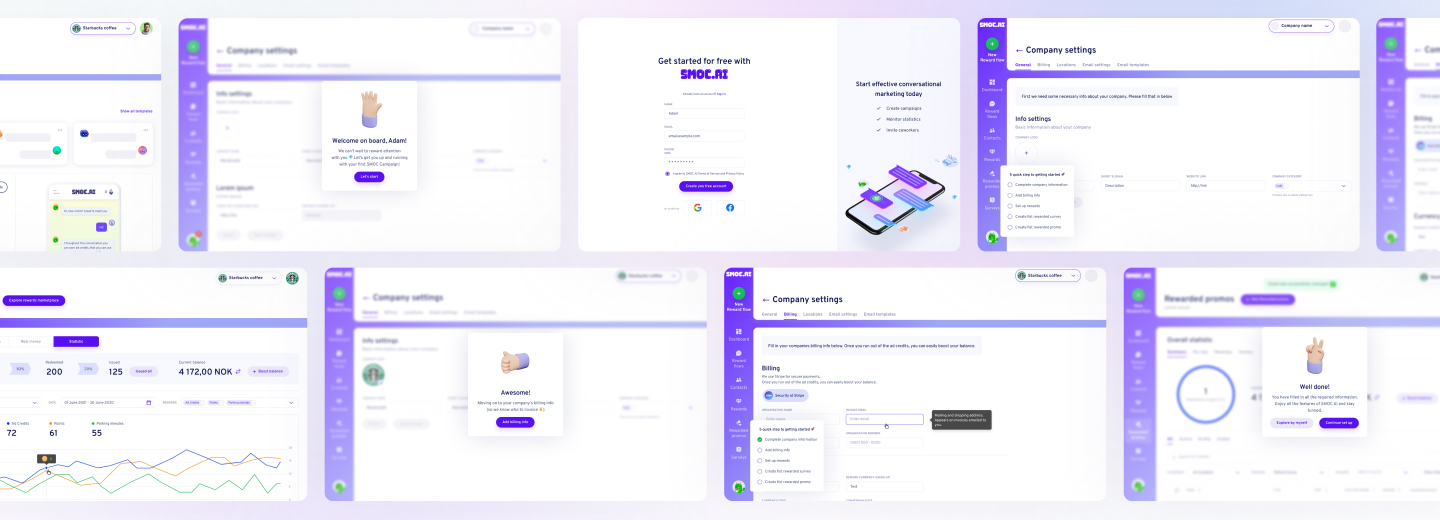Think back to your last great idea. Maybe it started as a sketch, a rough wireframe, or a late-night conversation with a co-founder. Soon enough, those thoughts evolved into new questions: How will it look? Will users understand the flow? Is it worth building at scale?
To get answers, you need to test the idea with something your users can touch. That’s where software prototypes step onto the stage, where you can transform an idea into software, though barebones, but still operable. We have seen just how pivotal thoughtful prototyping is, not only for product success but also for managing risk, impressing investors, and keeping budgets in check.
Money, of course, tends to dominate these conversations. Entrepreneurs, product managers, and even engineers often ask: How much does it cost to make a prototype, really? People are afraid to waste money before the product launch, which is understandable. The answer ranges from “it depends” to “somewhere between the price of a dinner and a down payment on a car.”
But let’s move through any uncertainties this question raises and take our real-world experience, combined with industry benchmarks, to form a generalised picture. In our article, you’ll find an advanced analysis of what goes into building a software prototype, how various elements affect pricing, and smart ways to keep prototype cost manageable without sacrificing value or vision.
WHAT'S IN THE ARTICLE
First, Let’s Define: What Are Software Prototypes?
Throw out the idea that a prototype is just a “basic demo.” In software, prototypes take many forms, visual mock-ups, clickable wireframes, interactive demos with simulated data, or even functional builds connected to live services.
Types of software prototypes include:
- Low-fidelity: Sketches or static wireframes, perfect for early ideation
- Mid-fidelity: Clickable, interactive wireframes, often with some real flow
- High-fidelity: Near-production apps with real interface, limited backend, or simulated data
Prototypes answer key questions: Will users “get” the product? What’s the ideal flow? Do investors and stakeholders feel confident? And most importantly, should we build the real thing? The prototype cost is the price paid for these answers, and getting them early is far less expensive than a full-scale product that misses the mark.
Key Elements Influencing Prototype Cost
Before crunching numbers, it pays to untangle the web of factors driving costs up or down. Every project is unique, but several predictable aspects carry the highest weight.
Complexity and Scope
No two prototypes are built the same. Sometimes, you need a simple three-page web flow; other times, a sprawling UX for a fintech or healthcare app. Broadly, cost of prototypes complexity refers to:
- Number of user roles (e.g., admin, user, guest)
- Depth of logic (conditional flows, calculations)
- Animation and micro-interactions
- Degree of interactivity expected
A billing dashboard, for example, with multiple charts and live filtering, is a different world from a single-form onboarding flow.
Technology Stack
Frontend-only prototypes (mocked in Figma, Adobe XD, or Sketch) are less resource-intensive than clickable HTML/JS builds. When you add backend simulation, authentication flows, or integrations, even if faked, the scope (and cost) increases.
Table: Example Cost Tiers by Prototype Stack
| Stack Level | Typical Tools | Estimated Price Range |
| Visual Mockup | Figma, Sketch | $500 – $2,000 |
| Clickable Web Flow | InVision, XD | $1,500 – $5,000 |
| Interactive Browser | React, Angular | $5,000 – $25,000+ |
| Functional Backend | Node, Django, Firebase | $10,000 – $50,000+ |
Development Approach
The “who” matters. An in-house developer may work differently from a specialized prototyping agency or a freelance design technologist. Often the tasks are done more slowly due to their other tasks and the overall load in the company. Rates, timeframes, and communication all play a part for the final calculations of the price.
- Freelancers: generally lower rates, but require management and may lack a process
- Agencies/Pro firms: higher upfront cost, but established process and speed
- In-house: variable, depending on team skillset
Cooperation Model
Project-based billing is standard, and may vary from hourly models to fixed price. Other models include a dedicated team where you pay for the team as a bunch or time and materials for everything you may use for your launch. Each model impacts transparency, risk, and the overall cost of prototyping a product.
Prototype Type (Fidelity Level)
Some startups only need low-fidelity at first; others, especially in enterprise, regulated industries, or consumer-facing apps, require high-fidelity. The fidelity level typically maps directly to time and labor, which drives up how much does it cost to get a prototype made.
Number of Screens and Features
The difference between prototyping six screens and twenty is night and day. It’s not just drawing extra views, but deciding how each connects, what data gets simulated, and which features need to “work” for testers.
Required Integrations
Demonstrating a map integration, payment gateway, or chat bot in a prototype demands API work, data flow simulation, and custom UI, the sort of thing that adds not hours, but days or weeks.

Looking to Build an MVP without worries about strategy planning?
EVNE Developers is a dedicated software development team with a product mindset.
We’ll be happy to help you turn your idea into life and successfully monetize it.
Tips to Keep Software Prototype Costs Manageable
With startups and enterprise innovation labs alike, budget discipline is part of the game. Having been both builder and buyer, my advice is practical, not just theoretical.
Focus on Core Features
Aim for what’s essential. Pare down scope to the smallest set of screens and flows that communicate your unique value. This slice is often called the “minimum viable prototype.”
Start with Low-Fidelity Prototypes
There’s wisdom in nail-before-scale. Test concepts using sketches, sticky notes, or wireframes before stepping up to high-fidelity work. You’ll reveal issues and save money by skipping what’s not yet proven.
Use Rapid Prototyping Tools
Seriously consider design software purpose-built for speed, like Figma, Adobe XD, or Marvel. These cut days or weeks out of the cycle compared to traditional coding.
Phased Approach
Divide prototyping into phases, each with clear goals. Maybe phase one is navigation and login. Phase two, dashboard and primary user flow. This method minimizes waste while maximizing learning during each stage.
Prioritize Features
Resist the urge to build every “nice to have” into the prototype. Prioritization keeps things sharp and shifts focus to validating the essential hypotheses, not indulging every feature idea.
Work with the Right Partners
Development companies or experienced prototyping agencies, consultancies make the difference. Many of them created and scaled startups, so they can add real value to your product. If chosen carefully, they save money in the long term through efficient processes, insight into pitfalls, and strategic vision.
Use Off-the-Shelf Components
Leverage UI kits and templates where it makes sense. Many libraries exist for rapid prototyping, a massive time and money saver.
Plan for Iteration
Build in both time and money for at least one or two rounds of feedback and iteration. Expect that users (and investors) will raise points you hadn’t anticipated.
Clearly Define Project Scope
Ambiguity breeds lost hours and ballooning costs. Use requirements documents, user flows, and prioritized feature lists to create a shared understanding with your development team.
Effective Communication with Your Development Team
Daily or semiweekly check-ins, quick feedback sessions, and centralized documentation prevent rework and confusion, both lethal for the cost of a prototype.
Hidden Costs of Prototypes
While some expenses are obvious, others emerge quietly as the project evolves enlarging the cost of prototypes. Seasoned founders see around these corners.
Unforeseen Iteration Expenses
In almost every prototyping project, there’s feedback that requires new screens, adjusted flows, or re-skinned components. Factor in contingency costs, usually 10–20% of total.
Integration and Compatibility Costs
Third-party plugins, browser compatibility fixes, or mimicking an API may sound minor, but can swallow days of work, especially if documentation is lacking.
Quality Assurance and Testing Costs
Even with a disposable prototype, bugs and usability kinks must be caught. Sometimes, QA is included; other times, it’s an extra, miss it, and you risk key stakeholders seeing embarrassing errors.
Scope Creep and Feature Expansion
It’s tempting to say “just one more feature,” but this is where projects start breaking budgets. Frequent check-ins with decision makers guard against this.
Vendor and Third-Party Service Fees
Aside from simple development, your prototype may sometimes need a paid API, licensed font, stock images, or a custom hosting environment. That may be required for your product just to work, and its price will be added to the final bill.

Proving the Concept for FinTech Startup with a Smart Algorithm for Detecting Subscriptions

Scaling from Prototype into a User-Friendly and Conversational Marketing Platform
The Value of Investing in Quality Software Prototypes
Prototypes are not just disposable assets; they are strategic tools that pay dividends far beyond product launches. Ask any serial entrepreneur or innovation lead, and wisely spent prototype dollars can unmask issues before they become expensive regrets.
Improved Product Validation
Fast, iterative prototypes reveal real user reactions to your concept. This hands-on evidence is more convincing than any pitch deck or static screen.
Enhanced Stakeholder Confidence
Interactive prototypes are persuasive. Investors, potential cofounders, or board members are more likely to get behind something they can actually click, tap, or see in motion.
Reduced Development Risks
Each prototype helps to overcome any hesitations you may have on your market positioning, product approach or general idea viability. As a result, it shifts risk from the expensive production phase into a cheaper, faster learning loop with less stress and rework further on.
Faster Time-to-Market
Well-run prototyping accelerates everything downstream. By the time main development starts, requirements are clearer, designs are validated, and teams move swiftly.
Better User Experience Insights
Watching users interact with a prototype surfaces friction points, confusing flows, and feature gaps, early enough to address them without major rework or delays.
Sample Prototype Cost Ranges
Actual prototype cost depends on your specific choices, but having this benchmark aids planning and expectation setting. Below, you’ll see estimated price bands for cost of prototype based on fidelity and scale, all based on industry benchmarks and real projects from a decade in the field:
| Prototype Type | Features | Sample Cost Range |
| Low-Fidelity (Wireframes) | Core flows (3–5) | $800 – $2,500 |
| Mid-Fidelity (Clickable) | Major user flows | $3,000 – $7,000 |
| High-Fidelity (Polished UI) | 8+ screens, data | $7,500 – $25,000 |
| Fully Functional Mockup | 12+ screens, APIs | $18,000 – $50,000+ |

Need Checking What Your Product Market is Able to Offer?
EVNE Developers is a dedicated software development team with a product mindset.
We’ll be happy to help you turn your idea into life and successfully monetize it.
Conclusion
The importance of prototype development can not be underestimated, especially when talking about startup development. Numerous techniques ensure your product is launched quickly based on the data you gathered during this prototype phase. The decisions you make become strategic when you understand your users, their long-term vision and desire all outweigh the initial cost of prototype.
And when the time shows that you have no opportunities to launch such an ordeal yourself, you are always free to contact specialised agencies to help. As we have calculated through the article, the price for prototyping is not the waste of early money startups have, it is an investment made to avoid further losses due to misunderstood market demand or product features. Each calculation should be done for each unique product, and our team is ready to leap into the next market test with you. Just leave your vision in the contact form and be ready for an impressive experience.
Particular timelines depend on the complexity of the desired prototype. A simple five-screen wireframe might be ready in under a week. High-fidelity or functional builds, especially with backend integration, can stretch out to two or three months. Even after that, they will depend on feedback cycles.
A wireframe is typically a basic, low-fidelity mockup. It holds no active points and serves as a general map. A prototype usually has some interactivity on top of the wireframe.
A clickable wireframe might cost $2,500. A visual and highly interactive prototype could run past $20,000. The choice depends on your goals, testing concepts or blowing away a boardroom with polish.
Absolutely. Many successful Web3 startups utilize a blend of token launches, VC involvement, crowdfunding, and early customer revenue. Ecosystem grants can provide a valuable boost, but are not a necessity.
Each route carries distinct benefits. Venture capital brings network access and strategic guidance, often best for technically ambitious or B2B-focused startups. Community-driven funding (through DAOs or launchpads) works for projects with consumer appeal, emphasizing grassroots buy-in and user loyalty. Many top ventures pursue a hybrid approach, first gaining community traction, then inviting institutional investment to scale.

About author
Roman Bondarenko is the CEO of EVNE Developers. He is an expert in software development and technological entrepreneurship and has 10+years of experience in digital transformation consulting in Healthcare, FinTech, Supply Chain and Logistics.
Author | CEO EVNE Developers


















